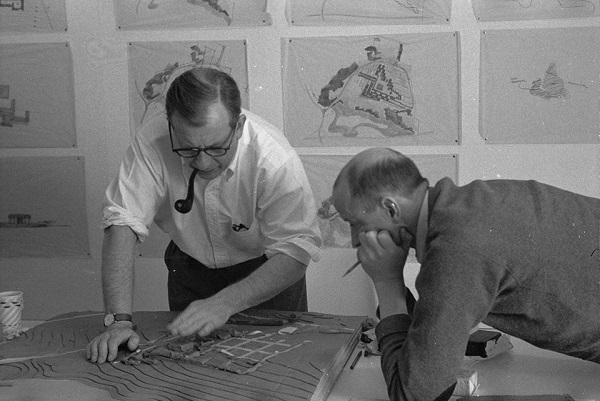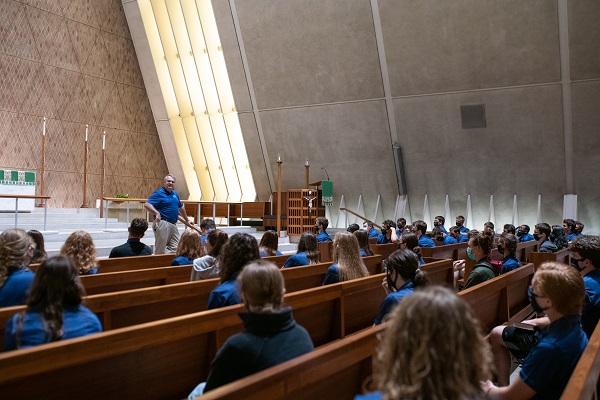
Christ Academy High School Begins

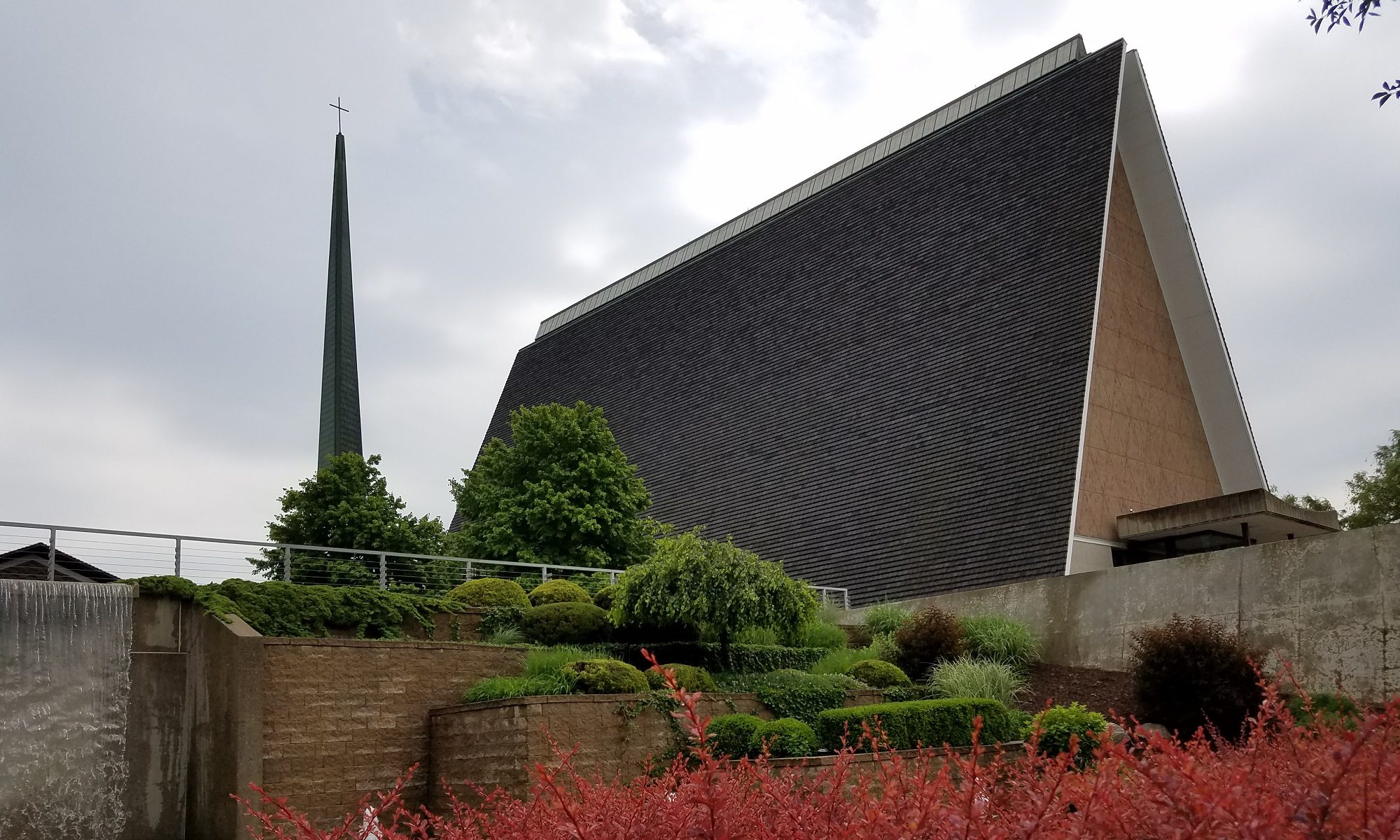
Concordia Theological Seminary, Fort Wayne
κήρυξον τὸν λόγον. Preach the Word.

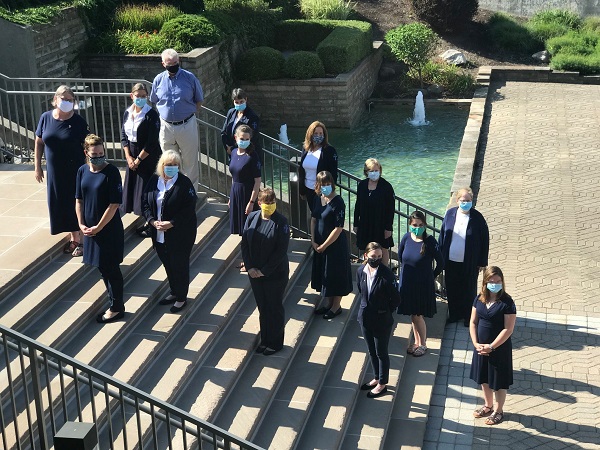
The Rev. Dr. Adam Koontz, Assistant Professor of Exegetical Theology at Concordia Theological Seminary in Fort Wayne, discusses his experiences in church planting with Communication Specialist Rebecca Ahlersmeyer.
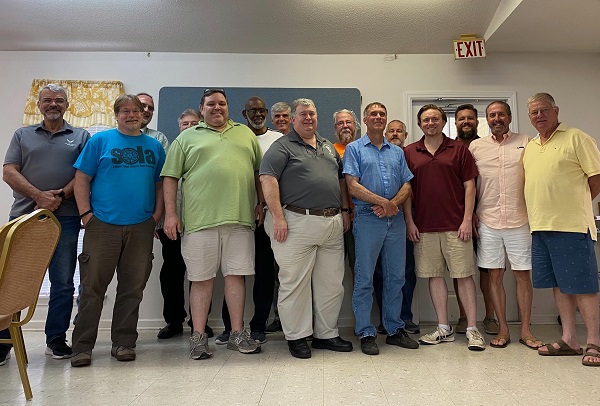
 Pastors from Louisiana, Alabama, Florida, and Nebraska attended the course. This is Prof. Pless’s third time in Gonzales. In addition to daily instruction and, as per tradition, the pastors enjoyed a shrimp boil and a crab boil, hosted by Rev. Karl Hollibaugh of St. James. The class met from June 22-24.
Pastors from Louisiana, Alabama, Florida, and Nebraska attended the course. This is Prof. Pless’s third time in Gonzales. In addition to daily instruction and, as per tradition, the pastors enjoyed a shrimp boil and a crab boil, hosted by Rev. Karl Hollibaugh of St. James. The class met from June 22-24.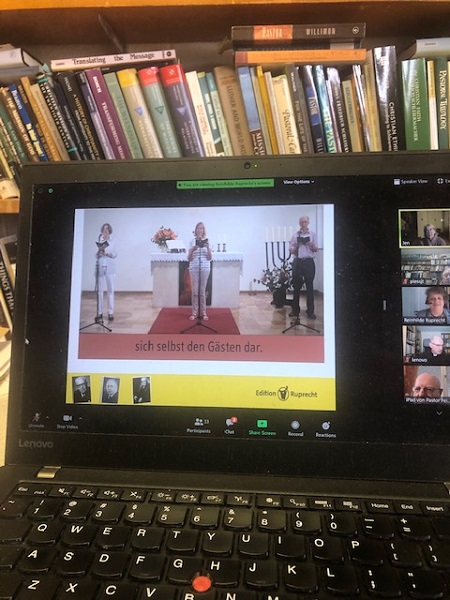
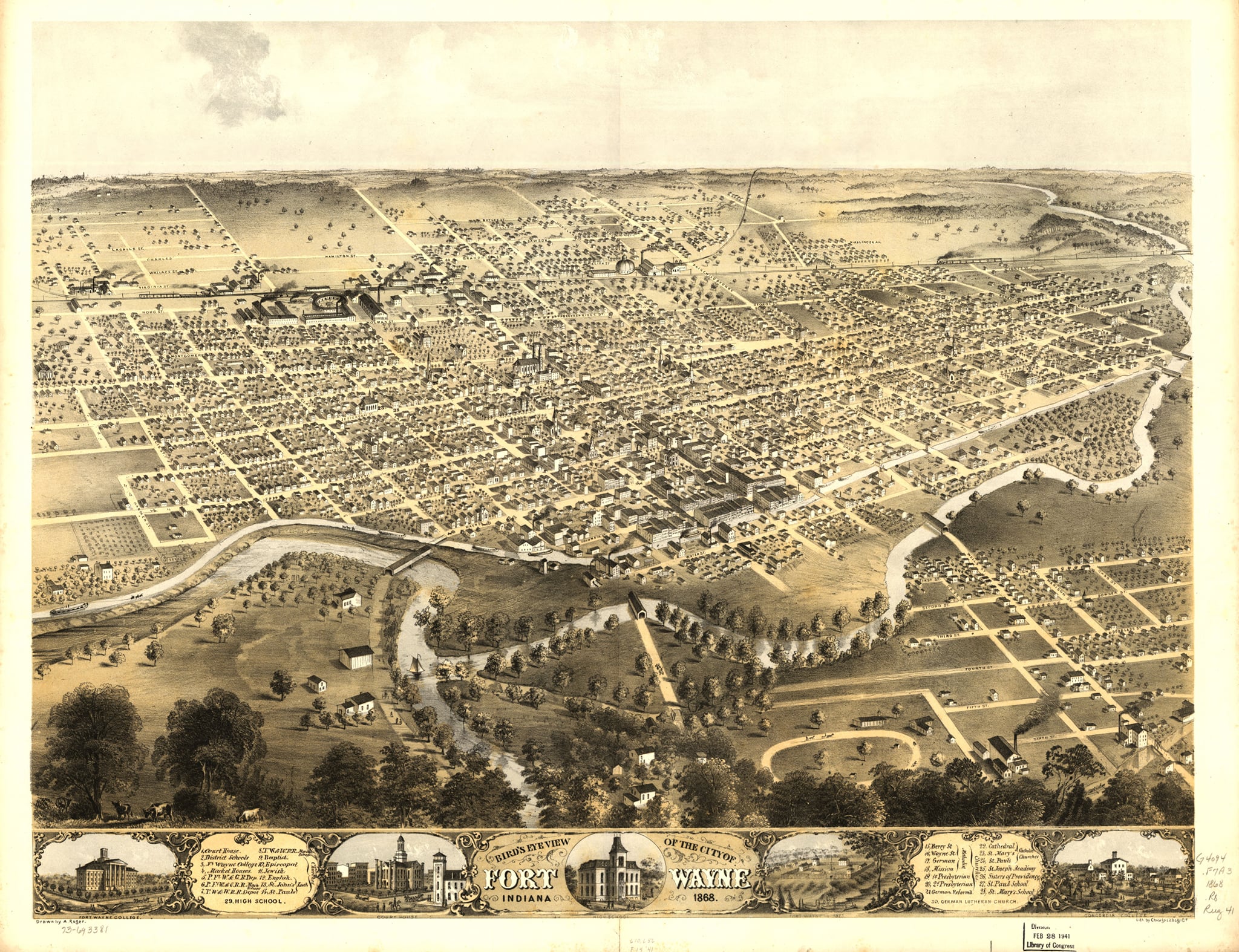
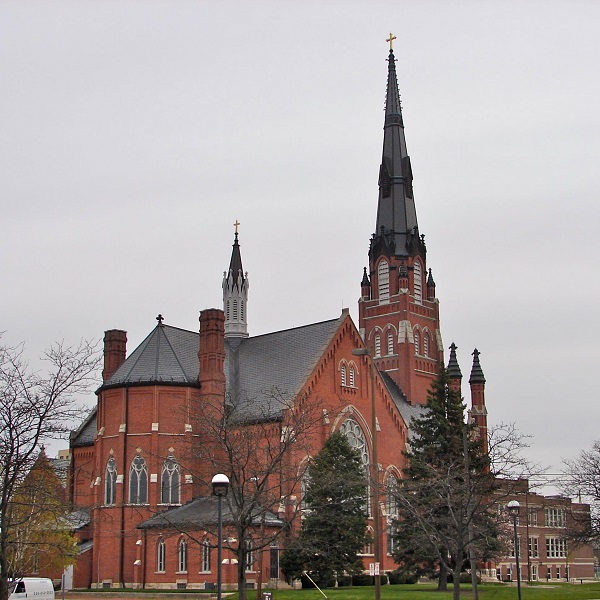
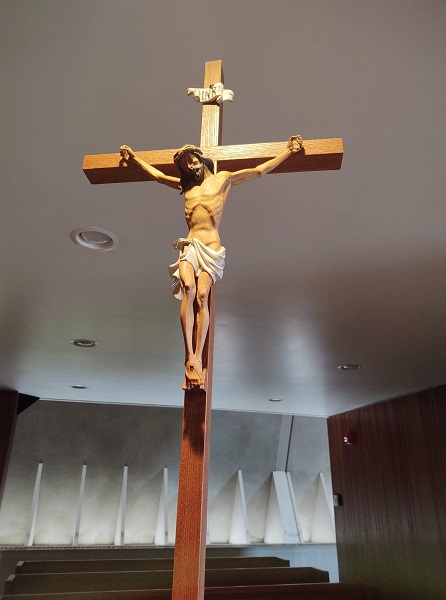 On-campus life continues to open up here at CTSFW, with prudence and caution still playing a major role in all decision-making. All visitors, students, staff, and faculty are required to wear face masks, with exceptions for those teaching a class who need to be heard clearly (so that no one has to try and understand Greek through a mask). Physical distance remains the expected norm and the absentee policy also remains flexible, to allow students, faculty, and staff to make prudent decisions about their health, especially if they are showing any symptoms.
On-campus life continues to open up here at CTSFW, with prudence and caution still playing a major role in all decision-making. All visitors, students, staff, and faculty are required to wear face masks, with exceptions for those teaching a class who need to be heard clearly (so that no one has to try and understand Greek through a mask). Physical distance remains the expected norm and the absentee policy also remains flexible, to allow students, faculty, and staff to make prudent decisions about their health, especially if they are showing any symptoms.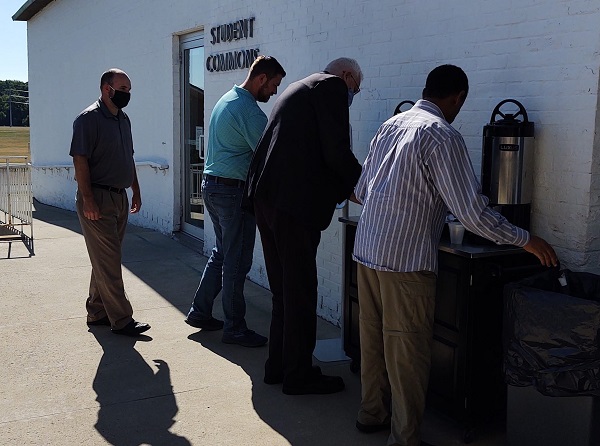
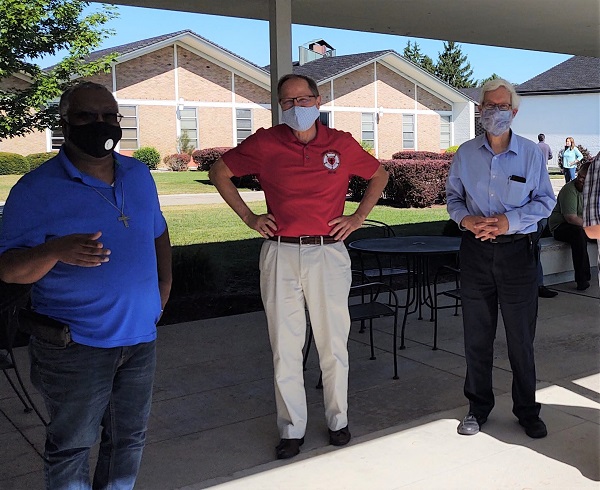
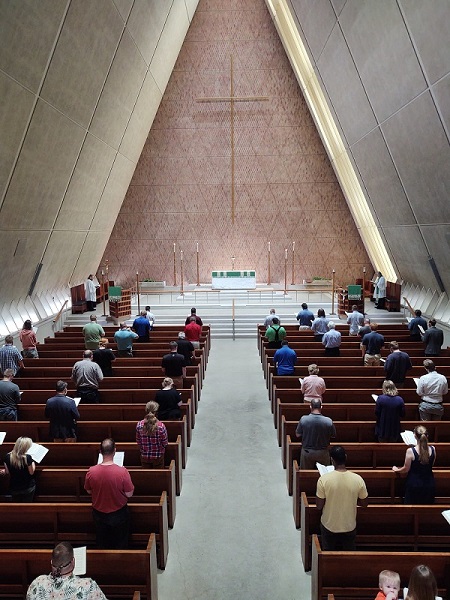
Deaconess Carolyn Brinkley shared this picture, posted to her page two days ago by Chaplain Jacob Scott with the following caption:
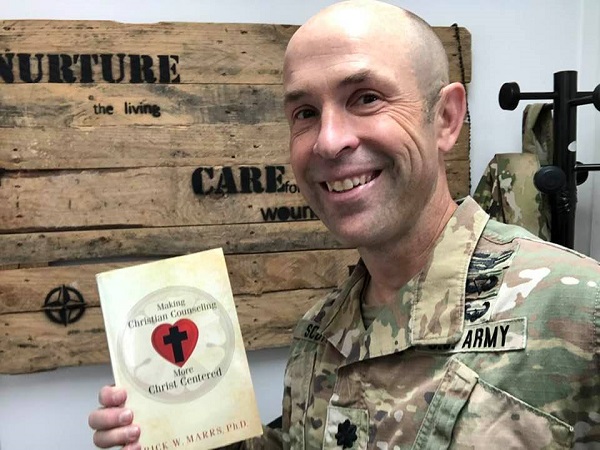
When Deaconess Brinkley asked Chaplain Scott if we could share his photo with everyone on our CTSFW Facebook page, he agreed, but also wanted to add this quote:
“Thanks to ‘our’ Deaconess Carolyn Brinkley and the CTSFW Military Project for faithfully encouraging so many of us while we serve America’s sons and daughters around the globe. Her thoughtful gifts of books and worship materials have been personally edifying and undoubtedly a blessing to my soldiers.”
Deaconess Brinkley runs the CTSFW Military Project. She provides resources to chaplains (and, through them, to the men and women in the Armed Forces), also praying for those who serve and connecting them with gifts from individuals, congregations, and other groups across the Missouri Synod. She’s the hand behind the notes of encouragement the CTSFW community writes to chaplains and military personnel connected to our community that go out each quarter. You can learn more about the CTSFW Military Project at www.ctsfw.edu/militaryproject.
She also wanted to point out that the book Chaplain Scott is holding, “Making Christian Counseling More Christ Centered” by Rick W. Marrs, PhD, was purchased and can be purchased from our CTSFW bookstore. You can contact the store at bookstore@ctsfw.edu or (260) 452-2160.
The LCMS Commission on Theology and Church Relations (CTCR) put together an addendum on Communion and COVID-19. It was written to address a document on online/home communion that has been circulating in the LCMS, endorsing communion at home through an online format (“Communion in Homes During Times of Crisis: Scriptural and Confessional Principles”). Four of our faculty members serve on the CTCR: Dr. Lawrence Rast Jr., President; Prof. John Pless, Assistant Professor of Pastoral Ministry and Missions; Dr. Naomichi Masaki, Professor of Systematic Theology; and Dr. James Bushur, The Carl and Erna Weinrich Associate Professor of New Testament and Early Church Studies. The addendum was written at the request of Dr. Matthew Harrison, President of the LCMS.
While the CTCR finds both common ground and empathy with their brothers in the ministry who seek to serve their people and congregations faithfully through online Communion (see, in particular, reason 1), they disagree with the conclusions that these brothers draw, fearing that, when practiced in such a way, the Sacrament raises doubts rather than strengthens faith.
From reason 2. It is the Lord’s Supper, not our supper:
The Sacrament of the Altar is not ours to do with it as we please. It is the Lord’s Supper and He is the true “officiant” since it is He who acts in the Words of Institution — and who instructs us regarding the proper use of His Supper.
“Our Lord Our Lord [sic] Jesus Christ, on the night when He was betrayed, took bread, and when He had given thanks, He broke it and gave it to the disciples and said: ‘Take, eat; this is My body, which is given for you. This do in remembrance of Me.’
“In the same way also He took the cup after supper, and when He had given thanks, He gave it to them, saying, ‘Drink of it, all of you; this cup is the new testament in My blood, which is shed for you for the forgiveness of sins. This do as often as you drink it, in remembrance of Me.’”
In these words, He calls us (His disciples) to repeat His holy meal (Do this) in His remembrance. He tells us what to do (taking bread and the cup of wine), what we are eating and drinking (His body and blood) and what we receive with it (forgiveness). The synoptic Gospels reinforce one another in these essential facts while St. Paul’s first epistle to the Corinthians corroborates them in the earliest church, showing both how they may be wrongly and rightly enacted…
“It is not a question of can one communion alone; rather, it is a question of should one commune alone.”* Similarly, the CTCR’s primary concern with online Communion is whether one can do it with certainty — whether it is a right use (“truly good, right and salutary”) of the Sacrament “according to Christ’s institution.”
Concern over right use is clearly evident in the Formula of Concord… These are matters of right use — the usus or actio that the Formula of Concord Solid Declaration discusses:
“In order to preserve this true Christian teaching on the Holy Supper and to avoid and eliminate many kinds of idolatrous abuses and perversions of this testament, this useful rule and guide is taken from the Words of Institution: nothing has the character of a sacrament apart from the use [usus] instituted by Christ or the divinely instituted action [actio]. (That is, when Christ’s institution is not observed as he established it, there is no sacrament.) This rule dare not be rejected in any way, but it can and should be followed and preserved in the church of God with great benefit. The usus or actio (that is, the practice or administration) does not refer primarily to faith or to the oral partaking, but to the entire external, visible administration of the Supper, as Christ established the administration of the Supper: the consecration, or Words of Institution, and the distribution and reception or oral partaking of the consecrated bread and wine, Christ’s body and blood. Apart from this practice it is not to be regarded as a sacrament — for example, when in the papistic Mass the bread is not distributed but is made into a sacrifice, or enclosed [in a tabernacle], or carried about in a procession, or displayed for adoration.”
This is very much pertinent to this conversation about online Communion. The “useful rule and guide” offered here is that “when Christ’s institution is not observed as he established it, there is no sacrament.” It has to do with “the entire external, visible administration of the Supper” and includes consecration, distribution and reception according to Christ’s institution.
And from reason 4. Emergency Baptism? Yes. Emergency Communion? No:
As we have noted, both Baptism and the Lord’s Supper have much in common. Both are instituted by Christ and depend entirely on the Gospel Word that empowers them and that defines their benefit — that both bestow forgiveness, life and salvation.
Yet, the different Means of Grace are also unique. The written Word can be disseminated in a variety of forms, while always retaining its character of divine inspiration and truth and offering throughout its pages the Gospel of salvation (e.g., John 5:39; Acts 17:1–2, 10–11; Rom. 1:1–3; 2 Tim. 3:16). The spoken Word of the Gospel, proclaimed individually by countless members of the royal priesthood and preached from pulpits as well as scattered abroad (“broadcast”) as far and wide as sound can be carried and without any restrictions on who would hear it, always retaining its character as the power of God for salvation (e.g., Matt. 13:3–9; Rom. 10:17; Luke 24:34). Baptism, administered always with water and always to a particular individual (even if thousands are baptized on the same day), retains its individual character as a means by which we receive discipleship, adoption, the Holy Spirit and new birth. And, in an emergency, any Christian baptizes (e.g., Matt. 3:11; 28:19; John 1:33; Acts 2:38–41; Rom. 6:3–4; Titus 3:5; 1 Peter 3:21).
So also, then, we receive the Lord’s Supper as a unique means of grace. It is not received by meditative reading alone, like the written Word. It is not scattered abroad, like the spoken Word. Unlike Baptism, it is not administered to the isolated individual except for when the pastor, who is called by the assembled church, carries the Sacrament on behalf of the assembly to the sick member. We value the Sacrament highly, but we restrict its administration rather than sharing it freely, having those with doubts and questions, visitors from other confessions and even our own children wait until they can share our confession (1 Cor. 1:10), examine themselves and rightly discern Christ’s body and blood. This is especially true in view of the sobering fact that the apostle’s instructions for the right use of the Supper contain a unique warning that its misuse can actually be harmful to the uninstructed and unprepared communicant both physically and spiritually (1 Cor. 11:27–32; see below under #5). Each of the Means of Grace is rightly used in a manner appropriate to it.
You can read the full 13-page addendum, positing ten reasons to question online Communion as good, right, and salutary by clicking here.
*Another resource is an unpublished paper written by Pr. Trevor Sutton (LCMS). His paper is “Making Sense of Online Communion: A Certain and Best Celebration of the Lord’s Supper,” dated January 17, 2020, available from the author.
Today is the Feast of St. Peter and St. Paul, Apostles. The two readings shared below are from Acts 15 and Galatians 2, which relate some of the way these brothers in Christ interacted with one another in accordance with the authority given to them in the days of the early Church. Peter preached most often to the circumcised (Jews) and Paul to the uncircumcised (Gentiles).
Much of the controversies and debates that raged in the early Church revolved around the tension between Jews and Gentiles and what made a person a Christian, such as whether the old ceremonial laws were still necessary for salvation–circumcision in particular. The answer here was (and is) no: we have been justified by faith through Jesus Christ alone.
Peter, an influential apostle/elder in the early Church’s Jerusalem Council, agreed with his brother in the ministry, Paul, who most often and clearly spoke out against the circumcision party. That said, Christ’s first-called fisher of men also struggled with the temptation to give way. In Galatians 2, Paul refers to a time when he called Peter out for his hypocritical behavior, for drawing back from his Gentile brothers in Christ out of fear of the circumcision party. The same Peter who was first of the disciples to confess Jesus as the Christ in Matthew 16 (then rebuked only a few short verses later for speaking against His death and resurrection); and Paul, who breathed threats and murder against the disciples of the Lord, before Christ converted him on the road to Damascus.
As iron sharpens iron, God used these men to refine one another and to speak clearly on the issues facing the early Church, already–even in these early days–beset by heresy and trouble. Their epistles stand as books of the Bible, serving not only those specific sheep to whom they were writing, but generations upon generations of Christians who also struggle with the temptation to doubt God’s Word. Thanks be to God, we are surrounded by a cloud of witnesses, faithful unto death and forgiven to everlasting glory in Christ Jesus our Lord.
Acts 15:1-21
But some men came down from Judea and were teaching the brothers, “Unless you are circumcised according to the custom of Moses, you cannot be saved.” And after Paul and Barnabas had no small dissension and debate with them, Paul and Barnabas and some of the others were appointed to go up to Jerusalem to the apostles and the elders about this question. So, being sent on their way by the church, they passed through both Phoenicia and Samaria, describing in detail the conversion of the Gentiles, and brought great joy to all the brothers. When they came to Jerusalem, they were welcomed by the church and the apostles and the elders, and they declared all that God had done with them. But some believers who belonged to the party of the Pharisees rose up and said, “It is necessary to circumcise them and to order them to keep the law of Moses.”
The apostles and the elders were gathered together to consider this matter. And after there had been much debate, Peter stood up and said to them, “Brothers, you know that in the early days God made a choice among you, that by my mouth the Gentiles should hear the word of the gospel and believe. And God, who knows the heart, bore witness to them, by giving them the Holy Spirit just as he did to us, and he made no distinction between us and them, having cleansed their hearts by faith. Now, therefore, why are you putting God to the test by placing a yoke on the neck of the disciples that neither our fathers nor we have been able to bear? But we believe that we will be saved through the grace of the Lord Jesus, just as they will.”
And all the assembly fell silent, and they listened to Barnabas and Paul as they related what signs and wonders God had done through them among the Gentiles. After they finished speaking, James replied, “Brothers, listen to me. Simeon has related how God first visited the Gentiles, to take from them a people for his name. And with this the words of the prophets agree, just as it is written,
“‘After this I will return,
and I will rebuild the tent of David that has fallen;
I will rebuild its ruins,
and I will restore it,
that the remnant of mankind may seek the Lord,
and all the Gentiles who are called by my name,
says the Lord, who makes these things known from of old.’
Therefore my judgment is that we should not trouble those of the Gentiles who turn to God, but should write to them to abstain from the things polluted by idols, and from sexual immorality, and from what has been strangled, and from blood. For from ancient generations Moses has had in every city those who proclaim him, for he is read every Sabbath in the synagogues.”
Galatians 2
Then after fourteen years I went up again to Jerusalem with Barnabas, taking Titus along with me. I went up because of a revelation and set before them (though privately before those who seemed influential) the gospel that I proclaim among the Gentiles, in order to make sure I was not running or had not run in vain. But even Titus, who was with me, was not forced to be circumcised, though he was a Greek. Yet because of false brothers secretly brought in—who slipped in to spy out our freedom that we have in Christ Jesus, so that they might bring us into slavery—to them we did not yield in submission even for a moment, so that the truth of the gospel might be preserved for you. And from those who seemed to be influential (what they were makes no difference to me; God shows no partiality)—those, I say, who seemed influential added nothing to me. On the contrary, when they saw that I had been entrusted with the gospel to the uncircumcised, just as Peter had been entrusted with the gospel to the circumcised (for he who worked through Peter for his apostolic ministry to the circumcised worked also through me for mine to the Gentiles), and when James and Cephas and John, who seemed to be pillars, perceived the grace that was given to me, they gave the right hand of fellowship to Barnabas and me, that we should go to the Gentiles and they to the circumcised. 10 Only, they asked us to remember the poor, the very thing I was eager to do.
But when Cephas came to Antioch, I opposed him to his face, because he stood condemned. For before certain men came from James, he was eating with the Gentiles; but when they came he drew back and separated himself, fearing the circumcision party. And the rest of the Jews acted hypocritically along with him, so that even Barnabas was led astray by their hypocrisy. But when I saw that their conduct was not in step with the truth of the gospel, I said to Cephas before them all, “If you, though a Jew, live like a Gentile and not like a Jew, how can you force the Gentiles to live like Jews?”
We ourselves are Jews by birth and not Gentile sinners; yet we know that a person is not justified by works of the law but through faith in Jesus Christ, so we also have believed in Christ Jesus, in order to be justified by faith in Christ and not by works of the law, because by works of the law no one will be justified.
But if, in our endeavor to be justified in Christ, we too were found to be sinners, is Christ then a servant of sin? Certainly not! For if I rebuild what I tore down, I prove myself to be a transgressor. For through the law I died to the law, so that I might live to God. I have been crucified with Christ. It is no longer I who live, but Christ who lives in me. And the life I now live in the flesh I live by faith in the Son of God, who loved me and gave himself for me. I do not nullify the grace of God, for if righteousness were through the law, then Christ died for no purpose.
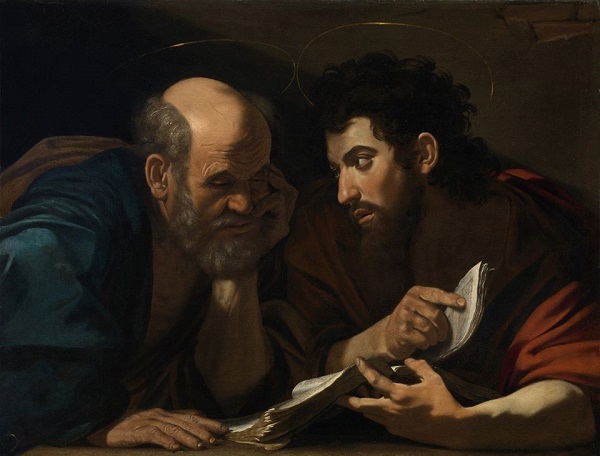
One of the highlights of our campus (which you may have recently seen in a Facebook live tour led by Director of Admission Rev. Matt Wietfeldt) is the architecture, designed by Eero Saarinen, who is famous for the St. Louis arch. We had a follow-up question from one of our viewers, asking with Saarinen was a Christian. Our resident Saarinen expert, Prof. Robert Roethemeyer, Director of our Library, had this to say:
Yes, the evidence suggests that he was a Christian, even a Lutheran in confession. His father’s father was a Lutheran pastor in Finland. His father was a Finnish-American architect whose last project was First Lutheran Church in Minneapolis.
Our chapel is one of five Saarinen-designed sacred buildings.
Eliel Saarinen (Eero’s father) designed two churches:
First Christian Church in Columbus, Indiana (1942)
Christ Lutheran Church in Minneapolis, Minnesota (1949)
Eero Saarinen designed two chapels and one church:
Chapel at MIT in Cambridge, Massachusetts (1955)
Chapel at Concordia Senior College, now CTSFW (1958)
North Christian Church in Columbus, Indiana (1964)
The two chapels are notable for their simplicity of design. The chapel at MIT is in the shape of a cylinder, giving us architecturally the circle and theologically eternity. The chapel at CTSFW is architecturally a triangle and theologically symbolizes the Trinity.
Another architectural piece to note on campus are the bricks all throughout the buildings. The lay horizontal through most of the campus, symbolizing our connection with one another in community. In the chapel, they lay vertically, emphasizing God coming to us.
